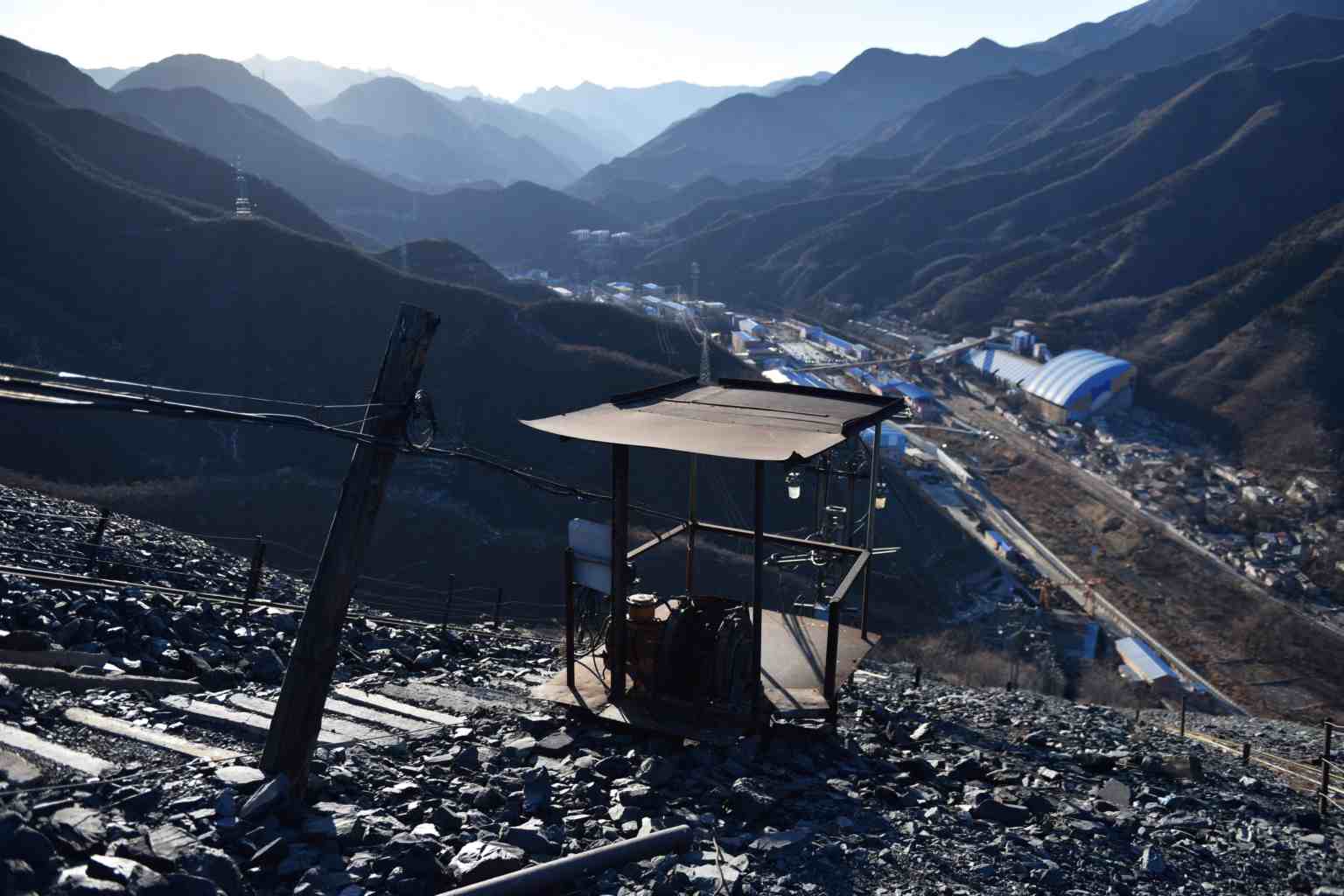Global coal power plant pipeline falls for fourth year, but China a concern, says report
Sign up now: Get ST's newsletters delivered to your inbox

In a file photo taken on Dec11, 2019, mining equipment is seen on a mountain of rocks above the Datai coal mine in Mentougou, one of China's oldest mining towns, located west of Beijing.
PHOTO: AFP
Follow topic:
SINGAPORE - The number of coal-fired power plants under development worldwide fell last year (2019), as climate concerns and competitive renewable energy projects chipped away at coal's viability, a study released on Thursday (March 26) showed.
The study by four non-governmental organisations looked at key indicators of the coal power sector globally, including capacity growth, construction starts and the amount of capacity permitted for construction.
For the fourth consecutive year, despite an uptick in the number of new coal plants going into operation, the overall global pipeline for new coal power capacity continued to contract.
Coal power capacity under construction and in pre-construction development has fallen two-thirds from 1,468 gigawatts (GW) in 2015 to 499.2 GW in 2019, say the authors. Capacity under construction fell 16 per cent last year compared with 2018.
Globally, the amount of power generated from coal fell 3 per cent last year compared with 2018, with coal plants operating on average 51 per cent of their operating hours, a record low.
"Global power generation from coal fell by a record amount in 2019, as renewable energy grew and power demand slowed down," said Dr Christine Shearer, lead author and director of the coal program at Global Energy Monitor (GEM), which tracks global coal plant development.
Coal plant retirements also accelerated last year. But perversely, new plants, mainly in China, led to additional global capacity but ultimately less power generation because of reduced usage.
"The number of new plants added to the grid accelerated, meaning that the world's coal plants were operated a lot less - more plants generating less power. For banks and investors that continue to underwrite new coal plants, this means weakened profitability and increased risk," Dr Shearer added.
Globally, 33 governments and more than 120 banks and insurers are leading a movement to shift away from polluting coal.
Burning it in power stations and steel mills is the single largest source of carbon dioxide (CO2), the main greenhouse gas heating up the planet. It is also a major source of harmful air pollution.
China is the world's largest greenhouse gas polluter and largest coal consumer, with about half the world's fleet of coal-fired power stations.
The authors found that outside China, the global coal fleet shrank overall with continued retirements in the United States and the European Union.
Within the Organization for Economic Cooperation and Development, coal power capacity has been declining since 2011, say the authors, with the exception of Japan. Nearly half of the retired coal power capacity in 2019 was in the US. During President Donald Trump's tenure, US coal plant retirements have increased 67 per cent compared to President Barrack Obama's time because of cheaper gas and renewables.
Globally, construction starts were down 5 per cent from 2018 and 66 per cent from 2015, compared to 2019, say the authors from GEM, Greenpeace International, the Sierra Club, and the Centre for Research on Energy and Clean Air.
Despite the decline in new project starts, the coal fleet grew by 34.1 gigawatts (GW) in 2019, the first increase in net capacity additions since 2015. Nearly two-thirds of the newly commissioned capacity was in China and it came online after being under construction for several years.
China's continued additions to its coal fleet put at risk global targets to limit planetary warming, even if the plants are only running 50 per cent of the time or less.
The United Nations' peak climate body, the Intergovernmental Panel on Climate Change, says the global economy needs to cut CO2 emissions by nearly half by 2030 to try to limit warming to 1.5 degrees Celsius above pre-industrial levels. Even at this level, there will be serious risks from more extreme weather events and rising sea levels.
The world has already warmed 1.1 deg C, the UN's World Meteorological Organization says.
Meeting the 1.5 deg C target, part of the 2015 Paris Climate Agreement, means deep cuts in coal use and rapid phase-out of coal plants. But China's development plans, and likely economic stimulus to recover from the pandemic, risk undermining the 1.5 deg C target, say analysts.
"The long plateau of coal use in China and emissions sticking close to current levels by 2030 or 2040 is the nightmare scenario," said Mr Lauri Myllyvirta, lead analyst at the Centre for Research on Energy and Clean Air.
"The concern about China's coal plants is not that they are going to run 24/7 and generate that much CO2. The big concern is that they will generate drag in terms of very powerful stakeholders resisting the shift away from coal," he told The Straits Times.
For example, from March 1 to 18 (2020), more coal-fired capacity was permitted for construction in China (7.9 GW) than in all of 2019 (6.3 GW), according to GEM.
In South-east Asia, commissioning of new coal plants has been slowing.
"South-east Asia is often hailed as the next centre for coal plant development. Construction starts there have fallen over 85 per cent, from 12.8 GW in 2016 to 1.8 GW in 2019," says the report.
Vietnam recently announced it was cutting its targets for coal-fired power generation from 2020 until 2030.
The pandemic has also led to a delay for some coal projects in Asia, says GEM.
In South and South-east Asia, GEM identified 15 locations totalling an estimated US$21 billion (S$30.5 billion) in capital outlays where coal-fired power plant construction is now on hold due to workforce and supply chain disruptions because of the coronavirus. Most of the projects are in Indonesia.

